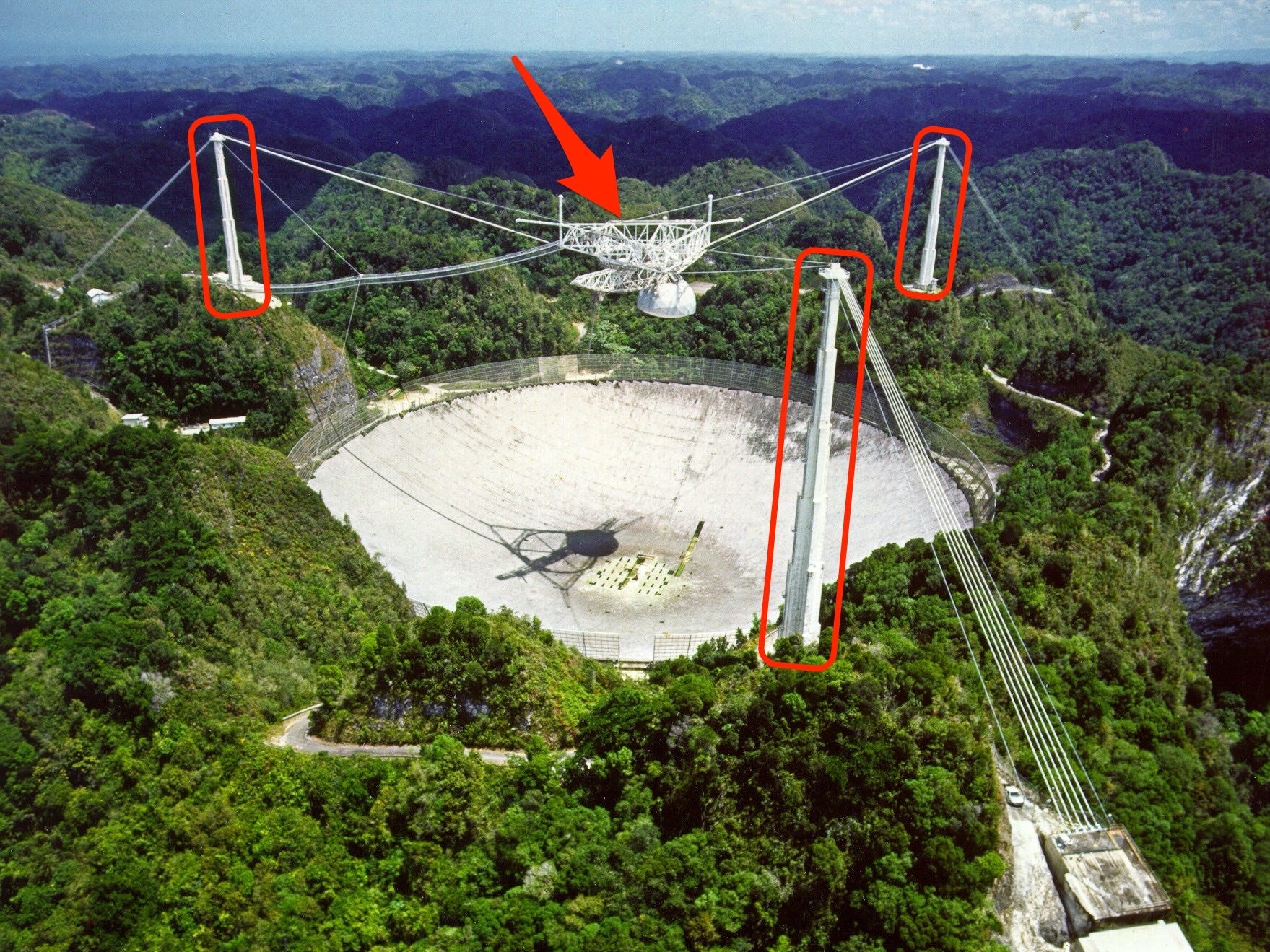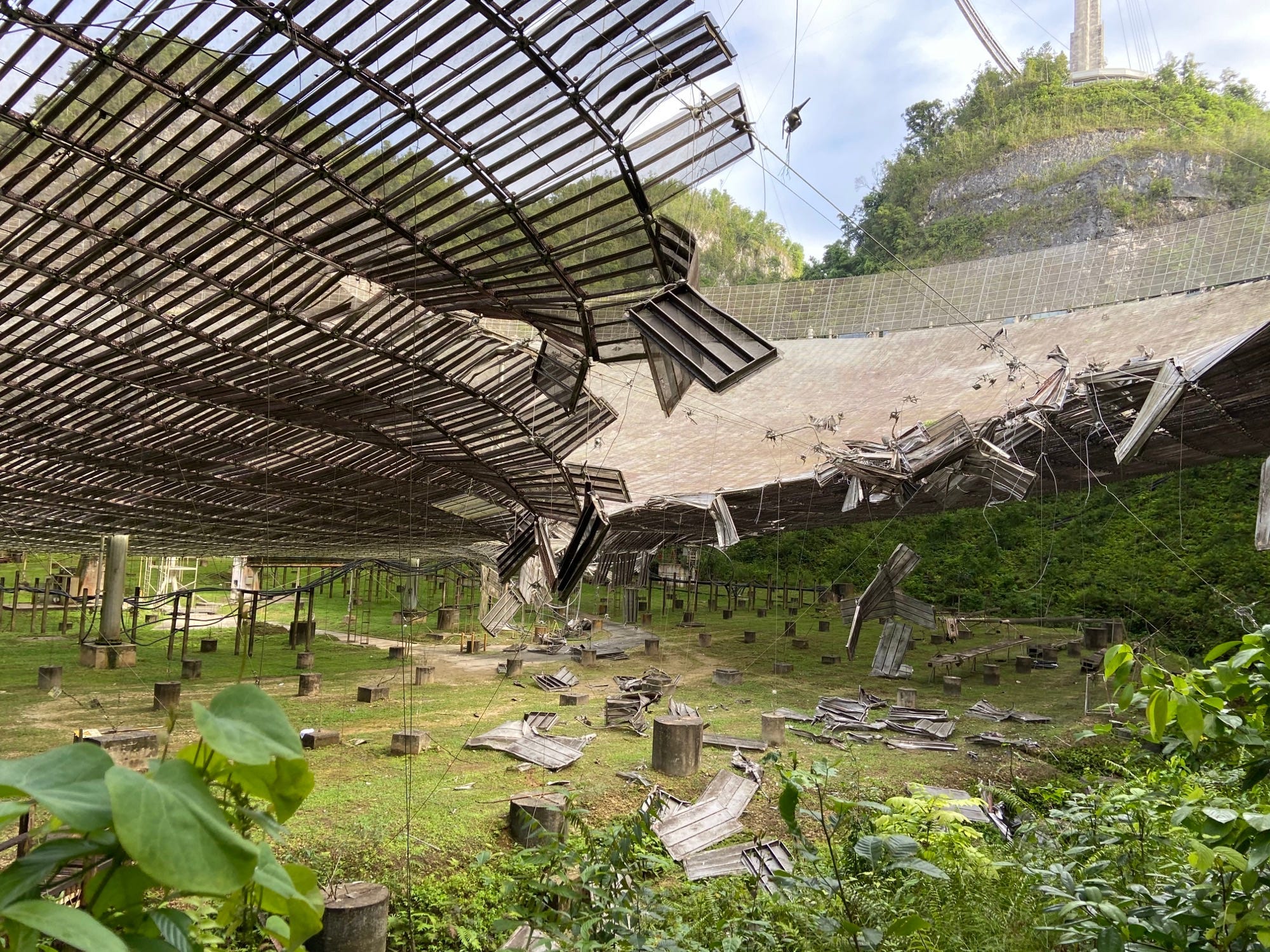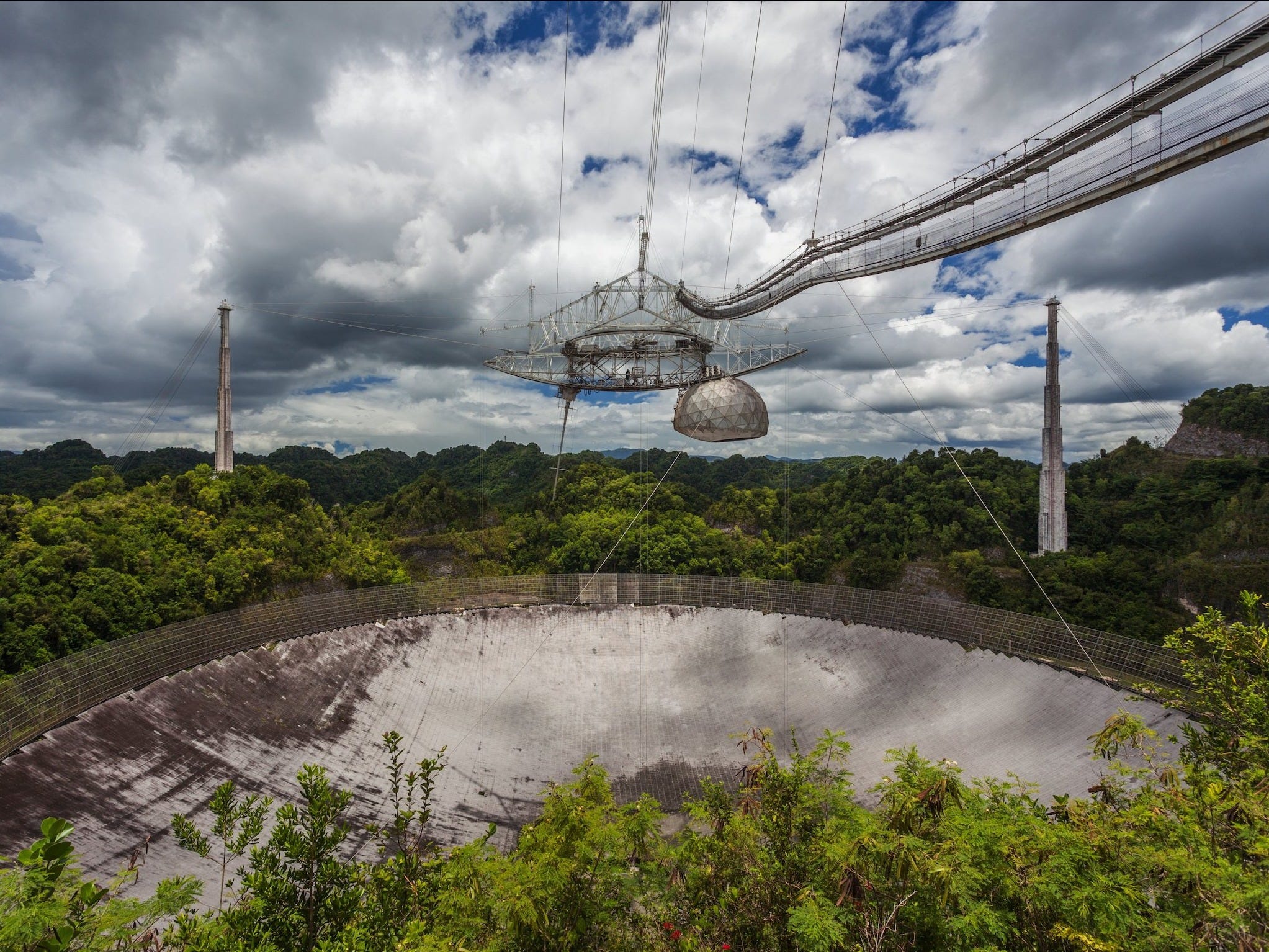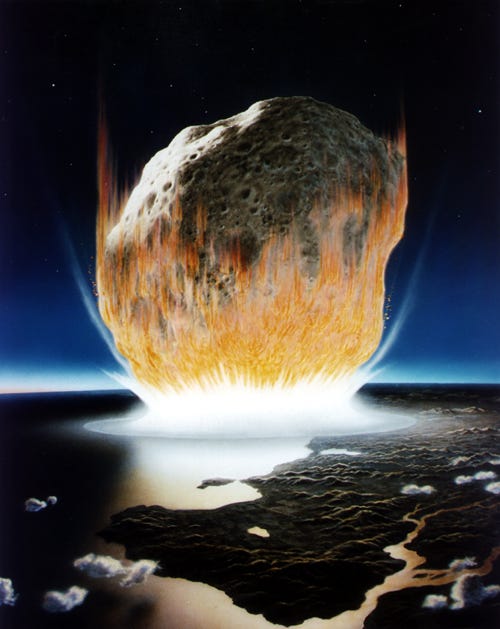
NAIC Arecibo Observatory/NSF; Business Insider
- The Arecibo Observatory’s iconic 1,000-foot radio telescope has been damaged beyond repair after two destructive cable breaks.
- If another cable fails, the telescope’s 900-ton platform would crash into its disk and could pull down three towers with it.
- Engineers are racing to deconstruct the telescope before it catastrophically collapses.
- The death of Arecibo is a major blow to efforts to protect Earth from hazardous asteroids and search for signs of alien life.
- Visit Business Insider’s homepage for more stories.
One of the world’s most iconic astronomical observatories has fallen apart beyond repair. Now it threatens to collapse entirely.
Following two unexpected cable breaks, engineers have determined that the Arecibo Observatory’s 1,000-foot (305-meter) radio telescope is so structurally unsound that any workers who try to fix it would risk their lives. So the National Science Foundation, which owns the Puerto Rico telescope, has decided to decommission it.
Now engineers are racing to figure out how to safely deconstruct one of the world’s largest radio telescopes before it collapses on itself. The structure is so unstable that engineers can’t even approach it to evaluate the risk and timing of such a collapse.
“Even attempts at stabilization or testing the cables could result in accelerating the catastrophic failure,” Ralph Gaume, director of the NSF’s Division of Astronomical Sciences, said in a press conference Thursday morning.
‘It’s like losing someone important in your life’
In its 57-year lifetime, the Arecibo telescope has hunted for hazardous near-Earth asteroids, searched for signs of alien life, and discovered the first planet beyond our solar system. In 1974, Arecibo beamed out the most powerful broadcast Earth has ever sent to communicate with potential aliens. In 2016, it detected the first repeating fast radio bursts — mysterious space signals that scientists now think come from dead stars.
But Arecibo's woes began in August, shortly after Tropical Storm Isaias passed over the island. A 3-inch-thick auxiliary cable popped out of its socket on one of the telescope's three towers and crashed into the reflector dish below. It tore a 100-foot gash in the panels.

Arecibo Observatory
Then in early November, just before repairs were set to begin in earnest, a 15,000-pound main cable from the same tower broke and crashed into the dish. Engineers had thought the structure was still strong enough to avoid a second disaster — and this cable was carrying just 60% of its estimated load capacity — but the failure proved them wrong. They decided they could no longer trust any of the remaining cables.
Both failed cables had been supporting an enormous metal platform hanging over the dish. If another cable from the same tower were to fail, engineers found, the platform would fall with it.
"The entire 900-ton platform will come crashing down into the main disk, and it's possible that the three main towers themselves, which are over 300 feet tall, will topple," Gaume said.

Universal Images Group via Getty Images
Deconstructing the telescope means abandoning any chance of saving it, but it's the course of action three engineering firms recommended.
"This decision is not an easy one for NSF to make. But safety of people is our number one priority," Sean Jones, assistant director for the NSF's Mathematical and Physical Sciences Directorate, said.
By moving quickly, the NSF hopes to salvage a set of buildings that lay directly below one of the telescope's towers. That way, the Arecibo Observatory can stay open — but without its defining feature.
"When I learned of the news, I was totally devastated," Abel Mendez, director of the Planetary Habitability Laboratory at the University of Puerto Rico at Arecibo, told Business Insider. He has been around the observatory since he was 10 years old and worked with it professionally for the last decade.
"It's hard to take. It's like losing someone important in your life. Yeah, 2020 — it's not good," he said.
The US has lost its best asteroid hunter and alien seeker
The loss of Arecibo's telescope is a major blow to humanity's search for alien life, our ability to defend the planet from asteroids, and the entire field of radio astronomy.
Mendez said that although Arecibo doesn't discover potentially dangerous space rocks, it's instrumental in investigating them: The observatory can ping such objects with radar to decrypt their shape, rotation, surface features, and trajectory through space.

Don Davis/NASA
Without that data, it's much harder to know if an asteroid is hurtling towards Earth.
The Arecibo Observatory plans to work with scientists who'd intended to use the telescope to find ways to transfer their research elsewhere, Gaume said. Other NSF facilities — the National Radio Astronomy Observatory in Virginia and the Green Bank Observatory in West Virginia — could potentially take on some Arecibo science.
However, Mendez said that Green Bank is only 10% to 20% as sensitive to weak radio signals as Arecibo. So he thinks the telescope's death effectively ends the US's chance at a comprehensive project to search for radio waves from alien technology.
"The only place that we have to do something like that, that'd be sensitive or more sensitive than Arecibo, is now FAST in China," Mendez said, referring to the Five-hundred-meter Aperture Spherical radio Telescope in Guizhou province. "The United States lost all that capability because it doesn't have Arecibo."
Arecibo and FAST, Mendez said, were Earth's "two big eyes" in radio astronomy.
"If you are monitoring a source of interest which is in the weak radio spectrum, you need two big radio telescopes: one pointing towards something during the day and the other through the nighttime," he explained. "If you lose Arecibo, then you lose the ability to monitor — 24 hours a day — a faint source of radio signals."
He added: "Now we just have one eye."
'We're working against the clock'
It will likely take about five or six weeks to figure out how to safely deconstruct the Arecibo telescope. Engineers will assess their options from afar, with drones snapping aerial photos.
The engineers are also considering ways to buy extra time, such as potentially tilting the towers a few inches to reduce weight on the remaining cables.
"We're working against the clock," Gaume said.
The technical reports that spell the death of Arecibo are embedded below.
If engineers can take apart the telescope before it destroys itself, the Arecibo Observatory will still be able to conduct some scientific research. Its LIDAR lasers can study Earth's upper atmosphere and ionosphere. It also has a facility on the island of Culebra that collects data on cloud cover and precipitation.
Future researchers could also still analyze archived data from the telescope.
